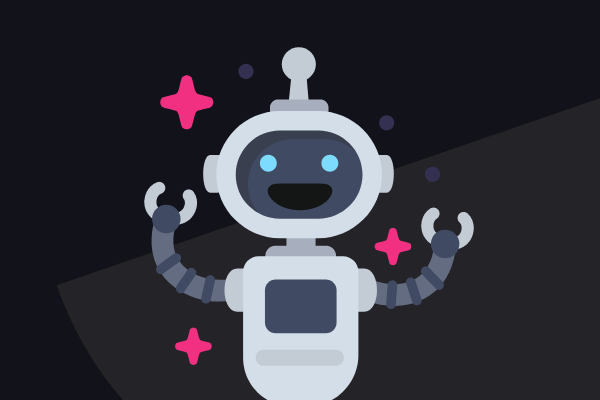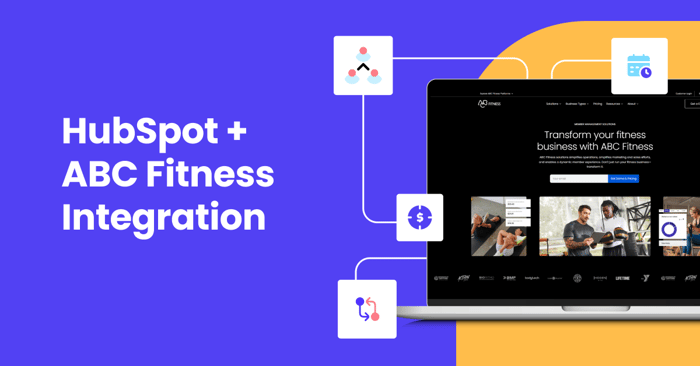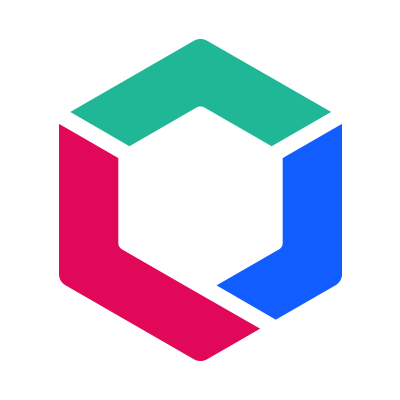Chatbots HubSpot Strategy Delivery
8 HubSpot Chatbot Best Practices & 16 Chatbot KPIs to Measure
12/15/2020 • 7 min read • Written by Lynton Team
Table of Contents
Speed and efficiency are paramount for success in today's business landscape, and AI-powered chatbots have emerged as crucial tools for enhancing customer interaction and operational efficiency. HubSpot, a leader in inbound marketing, sales, and service software, offers sophisticated chatbot capabilities integrated within its CRM platform to help businesses deliver intelligent, personalized customer experiences.
This guide provides an in-depth exploration of HubSpot's chatbot capabilities, equipping you with the knowledge and strategies needed to employ this technology effectively.
What is a Chatbot?
A chatbot is an advanced AI-powered application engineered to conduct human-like conversations through text or voice interactions. It is a pivotal component in the modern digital landscape, serving as an intelligent virtual assistant that interacts with users in real time.
In the HubSpot ecosystem, a chatbot is more than just a conversational tool. It's an integral part of a comprehensive customer engagement strategy that leverages machine learning and natural language understanding to deliver personalized experiences. It streamlines interactions, responding immediately to prospect or customer questions, guiding users through website navigation, and enhancing the overall customer experience.
The functionality of modern chatbots extends far beyond scripted responses. They can engage in contextual conversations, understand user intent, provide relevant information, answer complex queries, and maintain engaging interactions while seamlessly integrating with your business processes.
The Role of AI and Natural Language Processing in Chatbots
Advanced Artificial Intelligence (AI) and Large Language Models (LLMs) form the foundation of modern chatbot technology. These technologies enable chatbots to understand context, maintain conversation history, and generate human-like responses that are both coherent and contextually relevant.
Natural Language Processing (NLP) and Natural Language Understanding (NLU), branches of AI that focus on the interaction between computers and human language, are at the core of modern chatbots. These technologies enable chatbots to:
- Analyze and understand complex user inputs
- Interpret intent and sentiment
- Handle multiple languages effectively
- Generate contextually appropriate responses
- Learn from interactions to improve over time
- Determine when to escalate to human support
How Do Chatbots Work?
Modern chatbots operate on a sophisticated blend of machine learning models, natural language understanding, and advanced AI algorithms. They process user input through multiple layers of analysis to understand context, intent, and sentiment.
When users interact with a chatbot, their input is processed through these AI systems, which evaluate the message, maintain conversation context, access relevant knowledge bases, and generate appropriate responses. This process involves:
- Understanding natural language input
- Maintaining conversation context
- Accessing integrated knowledge bases
- Processing business rules and logic
- Generating human-like responses
- Learning from interactions
The Importance of Integration with Your Chatbot
Integration is crucial for maximizing chatbot effectiveness. By connecting with other systems such as CRM, analytics tools, and databases, chatbots become comprehensive solutions that deliver personalized, contextually relevant interactions.
HubSpot's chatbot platform provides native integration with its CRM system, enabling access to:
- Customer interaction history
- Purchase records
- Contact preferences
- Marketing engagement data
- Sales pipeline information
- Service ticket history
Step-by-Step Instructions for Creating a Chatbot in HubSpot
Creating a chatbot in HubSpot involves several strategic steps to develop an effective digital assistant. Here's the current process:
- Accessing the Chatbot Builder:
- Log into your HubSpot account
- Navigate to the "Conversations" tab
- Select "Chatflows" to access the builder
- Choosing a Template:
- Select from pre-built templates for common use cases
- Use the AI template assistant for custom flows
- Start from scratch for fully customized experiences
- Customizing the Flow:
- Set up conversation triggers
- Design message sequences
- Configure conditional logic
- Add personalization tokens
- Set up routing rules
- Integration Configuration:
- Connect with your CRM data
- Set up workflow automations
- Configure analytics tracking
- Enable multi-channel integration
- Testing and Deployment:
- Use the preview mode for testing
- Run conversation simulations
- Deploy to selected pages
- Monitor initial performance
Read More: Chatbot Trends to Follow
8 HubSpot Chatbot Best Practices
To maximize the effectiveness of your HubSpot chatbot, consider these current best practices:
- Define Clear Objectives: Set specific goals for your chatbot aligned with business objectives
- Design Conversational Flows: Create natural, engaging dialogue paths
- Implement Progressive Profiling: Gather information gradually across interactions
- Enable Multi-Language Support: Configure language detection and responses
- Maintain Context: Use conversation history and user data effectively
- Set Up Smart Routing: Configure intelligent handoff to human agents
- Ensure Privacy Compliance: Maintain GDPR, CCPA, and other relevant regulations
- Monitor and Optimize: Regularly analyze performance and make improvements
16 KPIs to Measure Chatbot Effectiveness
Measuring the effectiveness of your chatbot is crucial. By tracking specific performance indicators like engagement, conversion rate, user satisfaction, and more, you gain valuable insights into how well your chatbot is performing and where your team can improve it. Here is a closer look at some of the most important metrics to examine if you plan on regularly utilizing a chatbot to supplement your customer support efforts:
Total Number of Users
This KPI represents the total number of users (new, returning, engaged) who have used or are using your chatbot. If this number is low, there may be something off with your chatbot. It could be anything from page positioning to the number of pages to how slow it loads.
Engaged Users
Engaged users are significant because they represent people who have repeated sessions in a short period — daily or weekly, for instance. If you use a chatbot internally or have one set up to answer simple demo or billing questions, you want this number to be higher.
New Users
Equally important is the amount of new users your chatbot receives. The more new users you engage with can indicate that your chatbot is popular.
Chat Volume or Sessions
Chat volume refers to the number of sessions or successful conversations your chatbot has over a given time. Determining the time period is up to you. Monitoring this KPI shows an adoption rate over time. If it's low, you should reexamine parts of your bot.
Conversation Duration
Your conversation duration may depend on what your chatbot's intention is. For example, if you have a chatbot to guide someone to a demo request quickly, a short duration is good. It shows your chatbot understands what is needed. A chatbot programmed to handle support questions about your products or services may have a longer average duration.
Average Daily Sessions
This one is self-explanatory. It merely tells you how often users (new, returning, or engaged) are starting a conversation with your chatbot each day. Ideally, you want a good number of daily sessions to show your chatbot's effectiveness.
Total Conversations
Total conversations are the number of conversations your chatbot can handle daily. As you grow your user base, this number will grow as well. If they don't go up in tandem, this could be a sign that something is off somewhere.
Completion Rate
The completion rate of your chatbot refers to the success rate of a defined action your chatbot performs. If it's to guide people to your services page, and it does that, it's completed its goal. If it's designed to handle simple customer support questions and free up a support agent's time, it's also achieved its goal. Again, the higher the rate, the better.
Bounce Rate
Like a bounce rate on your website, this metric shows how many people entered your site without using or seeing your chatbot. In this scenario, the higher the percentage, the worse!
Fallback Rate
If your fallback rate is skyrocketing, you must restructure your chatbot. That's because a fallback is the number of times your chatbot cannot understand the user's needs and can't complete the task or redirect properly.
Activation Rate
Have you ever interacted with a chatbot and finished your initial conversation only to keep going because the bot engaged you with a new prompt? Then you contributed to its activation rate — or the metric that shows the number of users who engage in more tasks.
Chatbot Response Time
This shows how quickly your chatbot can start responding to your user. When your response time starts to slow, it's an indication something could be wrong with the back end.
Human vs. Chatbot Interaction
A chatbot can't answer all questions, and your bot should be able to pick up on that. The human vs. chatbot interaction rate will show how efficiently your chatbot is routing conversations to a human agent.
Ticket Deflection Rate
If you're using your chatbot to reduce your customer support agents' workload, look closely at ticket deflection rates. This shows the average number of tickets your team has had over time due to your chatbot.
Most Frequently Asked Questions
You can dig into your chatbot's metrics to see which questions are asked and which paths are taken most frequently. Data like this can show whether your chatbot can answer your customers' or prospects' concerns or if you need to make some tweaks.
Customer Satisfaction Rate
Some chatbots end with a simple question: "How would you rate your service today?" Collecting this information results in a customer satisfaction rate of how happy your users are with your chatbot's abilities. Lower rates indicate a misstep somewhere in the chatbot experience. You can follow up with a simple "Why?" to discover the reason.
Read More: Measuring What Matters: Optimizing Your Marketing Performance Metrics
Examples of a HubSpot Chatbot
HubSpot's chatbot builder offers versatile applications to cater to various business needs. To illustrate the range and capabilities of these chatbots, here are a few examples:
- Lead Qualification Bot: This chatbot engages website visitors to identify potential leads. It assesses the visitor's needs and interests by asking targeted questions, effectively segmenting and qualifying leads for further nurturing. HubSpot does a great job of this with its chatbot, which can be found throughout its website.
- Customer Support Bot: Aimed at providing immediate assistance, this bot handles common customer inquiries. It can answer FAQs, guide users through troubleshooting steps, and escalate issues to human agents when necessary. Many agencies use HubSpot's tool to support customers by giving them a selection of queries that align with their interests.
- Booking Bot: This chatbot streamlines the appointment scheduling process. It interacts with visitors to determine their needs and schedules meetings or calls by integrating with your calendar system, ensuring a smooth and efficient booking experience. Several companies in the travel, healthcare, and restaurant industries use chatbots in this scenario.
Get Started with Chatbots Today
HubSpot's chatbot platform combines advanced AI capabilities with robust CRM integration to deliver powerful, personalized customer experiences. By following the principles and practices outlined in this guide, you can effectively implement and optimize chatbot technology for your business.
For help building or streamlining your chatbot, contact our team today.
By: Lynton Team
Lynton is an innovation agency with over 25 years of digital experience, helping organizations tackle marketing challenges, embrace new technologies, and drive growth. We combine creative strategy with technical expertise to build smarter websites, integrate systems, and turn data into actionable results.
You May Also Like

HubSpot
9 Chatbot Trends We're Watching
Explore emerging chatbot trends and discover how AI-driven chatbots can revolutionize your business operations and customer i...
Keep Reading
Integrations
What Can a HubSpot Integration Do for You?
Marketing automation platforms such as HubSpot, and customer relationship management systems (CRM) are critical components of...
Keep Reading
Integrations
Everything to Know About The ABC Fitness HubSpot Integration
Discover how the ABC Fitness + HubSpot integration can transform your gym's operations, boost member engagement, and drive gr...
Keep ReadingSubscribe Today

